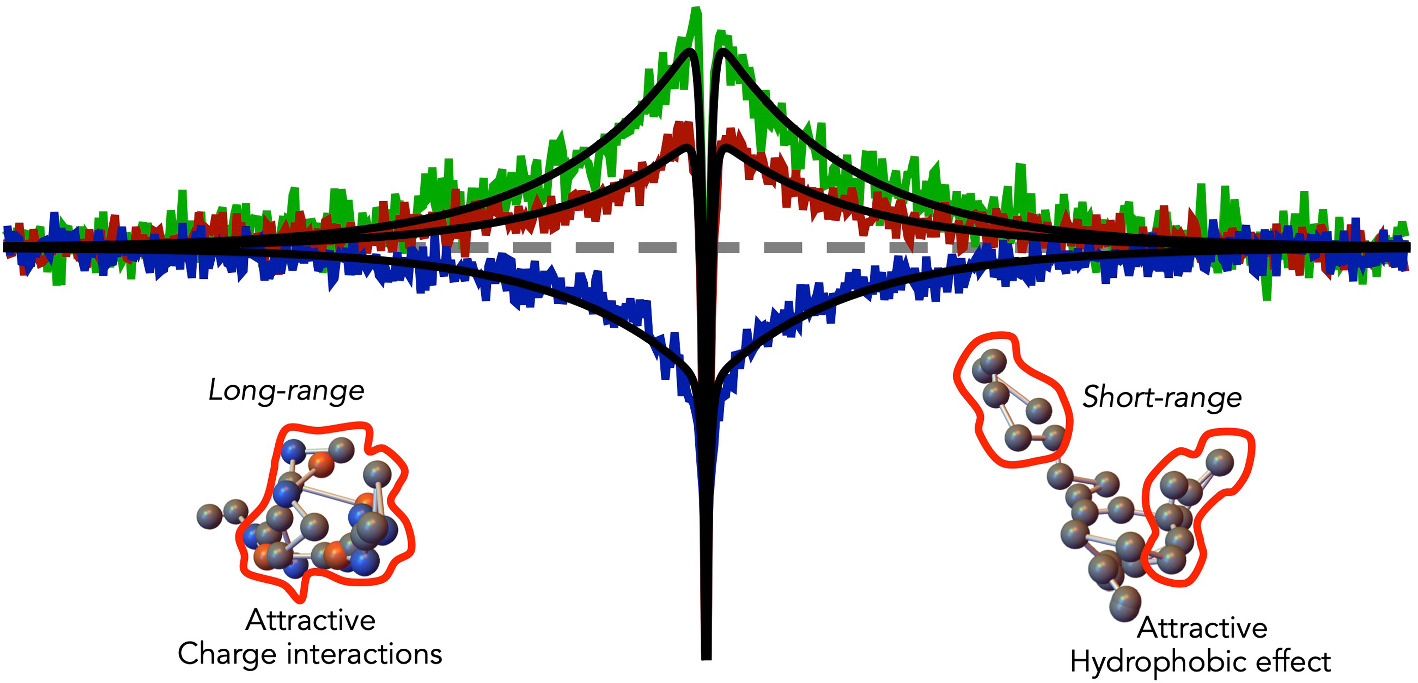https://doi.org/10.1140/epje/s10189-023-00383-7
Regular Article - Soft Matter
Electrostatics and hydrophobicity in the dynamics of intrinsically disordered proteins
1
Department of Chemical and Structural Biology, Weizmann Institute of Science, Herzl St. 234, 76100, Rehovot, Israel
2
Present Address: Department of Structural and Molecular Biology, University College London, Darwin Building, 107 Gower Street, WC1E 6BT, London, UK
b
hagen.hofmann@weizmann.ac.il
Received:
16
October
2023
Accepted:
20
November
2023
Published online:
21
December
2023
Internal friction is a major contribution to the dynamics of intrinsically disordered proteins (IDPs). Yet, the molecular origin of internal friction has so far been elusive. Here, we investigate whether attractive electrostatic interactions in IDPs modulate internal friction differently than the hydrophobic effect. To this end, we used nanosecond fluorescence correlation spectroscopy (nsFCS) and single-molecule Förster resonance energy transfer (FRET) to quantify the conformation and dynamics of the disordered DNA-binding domains Myc, Max and Mad at different salt concentrations. We find that internal friction effects are stronger when the chain is compacted by electrostatic attractions compared to the hydrophobic effect. Although the effect is moderate, the results show that the heteropolymeric nature of IDPs is reflected in their dynamics.
This article is dedicated to Fyl Pincus, an extraordinary physicist and a friend.
© The Author(s) 2023
 Open Access This article is licensed under a Creative Commons Attribution 4.0 International License, which permits use, sharing, adaptation, distribution and reproduction in any medium or format, as long as you give appropriate credit to the original author(s) and the source, provide a link to the Creative Commons licence, and indicate if changes were made. The images or other third party material in this article are included in the article's Creative Commons licence, unless indicated otherwise in a credit line to the material. If material is not included in the article's Creative Commons licence and your intended use is not permitted by statutory regulation or exceeds the permitted use, you will need to obtain permission directly from the copyright holder. To view a copy of this licence, visit http://creativecommons.org/licenses/by/4.0/.
Open Access This article is licensed under a Creative Commons Attribution 4.0 International License, which permits use, sharing, adaptation, distribution and reproduction in any medium or format, as long as you give appropriate credit to the original author(s) and the source, provide a link to the Creative Commons licence, and indicate if changes were made. The images or other third party material in this article are included in the article's Creative Commons licence, unless indicated otherwise in a credit line to the material. If material is not included in the article's Creative Commons licence and your intended use is not permitted by statutory regulation or exceeds the permitted use, you will need to obtain permission directly from the copyright holder. To view a copy of this licence, visit http://creativecommons.org/licenses/by/4.0/.





